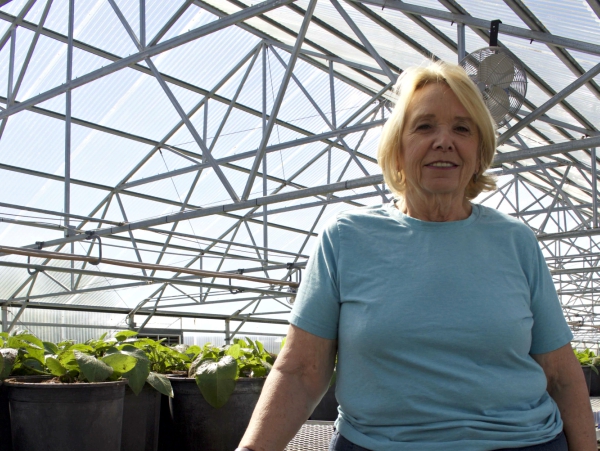
Atchley Farms’ sanitation practices cut down on disease threat
Emma Atchley keeps her half-acre greenhouse as sanitary as a hospital and uses laboratory techniques to propagate potato plants.
There’s no tolerance for the slightest trace of disease at the earliest stage in the seed potato production process, as quality problems are amplified with each subsequent field generation.
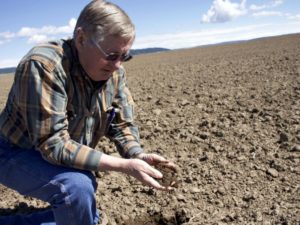
“We use hospital sanitation processes in the greenhouse, and we use chemicals that are designed for hospitals — bactericides, virucides and fungicides,” Atchley said. “And we have never, in 28 years, had any significant disease issues.”
Raised in Boise with no farming background, Atchley earned her college degrees in English. Yet, she now fills a highly specialized niche in seed production — a function conducted by just a handful of operations due to the intensive sanitation requirements. The 71-year-old has also somehow found the time to play a significant role in shaping Idaho’s educational policies, as a longtime member of the state Board of Education.
Atchley estimates more than 95 percent of Idaho’s potato production can be traced back to a University of Idaho laboratory. Before planting, UI technicians take a single perfect tuber specimen and treat it to make certain it harbors no disease. The resulting potato stem is then cut into several segments, which are placed in petri dishes filled with growth medium to generate new plantlets. The process is repeated until the original stem has given rise to tens of thousands of plantlets.
UI pots some of its tiny plantlets to produce mini-tubers, known as pre-nuclear seed. Other plantlets are sent to other seed producers, such as Atchley, who have the facilities to produce their own mini-tubers.
Inside Atchley’s greenhouse, located 5 miles east of Ashton, each plantlet gets its own 9-inch pot. For the first four days, plants are watered every 20 minutes by an overhead irrigation system. Once the plants grow above the rims of their containers, Atchley applies systemic insecticide and time-release fertilizer, and she finishes filling each pot with additional soil to yield more mini-tubers. She plants her greenhouse during the second week of April and harvests in late August or early September, using a special table to separate the mini-tubers from the soil before packing them in boxes and storing them in a cool and humid environment.
“I call it the annual miracle that this little, tiny thing the size of a sewing needle with three or four leaves will start to grow and turn into a full-sized potato plant,” Atchley said.
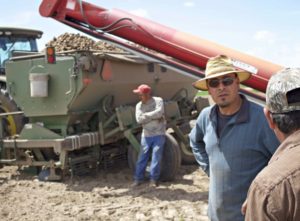 She pots between 10,000 and 20,000 plantlets each spring, based on her projection of seed demand three to four years into the future, allowing for time to expand seed until it’s ready for sale either to commercial growers or other seed growers who don’t start as early in the process. Every square foot of greenhouse space she plants yields about a pound of mini-tubers.
She pots between 10,000 and 20,000 plantlets each spring, based on her projection of seed demand three to four years into the future, allowing for time to expand seed until it’s ready for sale either to commercial growers or other seed growers who don’t start as early in the process. Every square foot of greenhouse space she plants yields about a pound of mini-tubers.
After a long dormancy period, the mini-tubers are poised for rapid growth the next spring, when she plants seed in the field for the first time, known as the nuclear generation. Atchley typically plants 10 to 15 acres of nuclear seed — she plants about a third of the nuclear seed in Ashton and contracts with a North Dakota farm to raise the remainder, due to concerns about increasing disease pressure from aphids in her own growing region. The next season’s seed expansion is considered the first generation. Commercial growers usually buy third- or fourth-generation seed.
Atchley once raised 27 varieties of pre-nuclear seed in her greenhouse, contracting with Idaho Falls-based Potandon Produce. Now that Potandon has started raising its pre-nuclear seed in-house, Atchley raises just six varieties, all for use on her own farm.
“She’s done an excellent job in that greenhouse,” said her husband, Clen. “That’s become a very valuable part of the farm, growing these early-generation potato seeds.”
Marrying into potato farming
After graduating from Borah High School in Boise, Atchley enrolled at UI, where she earned a bachelor’s degree in English. That’s also where she met Clen.
She went on to graduate school in California, where she earned a master’s in English; Clen headed to serve in the Vietnam War. They corresponded throughout his tour of duty and married in 1970, upon his return.
Atchley moved to Ashton thinking she’d spend her life as a teacher. Indeed, she obtained a teaching certificate from UI and taught school in Ashton for a few years before she and Clen decided to start a family. She gave up teaching to devote her time to her two daughters and began doing incidental work on the family farm. She also did the farm bookkeeping.
“That’s an example of life turning out differently than you expect,” Atchley said.
Clen’s farming roots run deep. His grandfather homesteaded land in Ashton in 1901, and his father and three uncles continued farming in the area. When Clen returned from Vietnam, his farm encompassed about 1,200 acres, including 250 acres devoted to spuds. Nowadays, he and his wife farm 5,000 acres, raising about 1,000 acres of seed potatoes.
Atchley’s pre-nuclear seed greenhouse first opened for business in 1990. She had been helping her mother-in-law maintain a large vegetable garden, while Clen and a friend were having a hard time finding a reliable source of early generation potato seed.
“They wondered if we might do a greenhouse operation and start from scratch,” Atchley recalled. “They said, ‘We don’t know anybody who might do that except for you.’”
A friend with experience at running a collegiate greenhouse, Carolyn Sluis, provided Atchley with basic training in producing mini-tubers from tissue cultures.
“I tell everybody I’m the poster child for the value of a liberal arts education, because liberal arts folks learn to think critically, and we can learn just about anything,” Atchley said.
A leader in Idaho education
Though Atchley stopped teaching, she never relinquished her commitment to Idaho education.
She’s served on her local school board and she’s been active in both the University of Idaho Alumni Association and its foundation. She was also instrumental in establishing foundations for schools in Ashton and North Fremont.
“I’ve always been an advocate for education. I really do think our founders were correct when they said that an educated populace is necessary to preserve the nation and our democracy,” Atchley said.
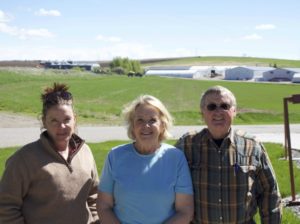
In the mid-1990s, when Phil Batt was Idaho governor, Atchley applied for a position on the state Board of Education. She wasn’t selected. More than a decade later, however, another position on the board opened in Eastern Idaho. Reluctant to apply again given her busy schedule, she agreed to give it a shot at the urging of friends.
She joined the board in 2009 and continues to represent her region. Her tenure has included two stints as the board’s chairwoman. Atchley also recently retired from the Bank of Idaho Board of Directors.
“She’s done a lot of jobs at the same time. Sometimes I wonder how she’s kept track of it,” Clen said. “She’s very focused.”
Though it can take several years for the effects of policy changes to become apparent, Atchley is encouraged by the progress Idaho schools have made during the past decade.
For example, she’s pleased by strides made in the percentage of Idaho college freshmen who continue into their sophomore years. While more than half of Idaho freshmen once dropped out of school, the retention rate has improved in recent years to roughly 80 percent.
Atchley, however, acknowledges the state has great room for improvement in the percentage of high school graduates who continue onto college. The board’s staff has been reaching out to students to identify reasons why the so-called go-on rate has been so low — according to the state, only 45 percent of Idaho high school graduates enrolled in college in the fall of 2017.
“We have a phenomenon called summer melt. They intend to go to college but don’t get there,” Atchley explained. “We are finding out a lot of times students don’t hear from institutions and (colleges) don’t maintain contact after a student has applied and is admitted.”
She said the state board has instructed its eight public higher-education institutions to maintain better contact with incoming freshmen.
Atchley believes a change in state policy made two years ago, allowing students to become accepted into all of Idaho’s public post-secondary institutions with a single application, has resulted in an increase in applications, in-state applicants and applications from
first-generation college students.
She’s also excited about a couple of agriculture-related developments at her alma mater. UI plans to open a new Moscow facility for making early generation potato seed, which should significantly increase the program’s production. The facility will also house a comprehensive
seed bank for storing potato varieties.
To aid dairy farmers with cutting-edge research, UI plans a new Center for Food Production and Food Processing in Twin Falls.
Looking ahead
During the 2017 growing season, Atchley said Idaho’s potato acres were down, and spud prices have consequently been strong lately, relative to other commodities.
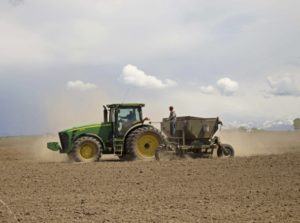
She’s sold out of potato seed, and based on seed demand, Atchley anticipates a slight increase in Idaho potato acres in 2018. In addition to seed potatoes, their farm produces wheat, certified wheat seed, canola, alfalfa and beef.
She and Clen have already begun transitioning their farm to the next generation. Their daughter, Laura Pickard, will assume responsibility for the farming operations. Pickard holds a master’s degree in agricultural economics from UI. She’s also served an internship with Food Producers of Idaho and worked in politics in Washington, D.C., as a staff member for former Sen. Larry Craig, R-Idaho.
“Ultimately, my path ended back where my heart was, I suppose — on the farm,” Pickard said. “I’m blessed to have the opportunity to be here. There’s nothing like it.”
Their other daughter, Evelyn, works as a graphic designer in Boise. Evelyn owns some of the family’s farm ground and helps with farm duties when she finds time.
Pickard’s husband, Clay, has assumed responsibility for the family’s medium-sized cow-calf operation.
In Atchley’s other role — setting state policy for schools with the state Board of Education — her term expires in 2020.
“We’ve had a lot of good things work for us as far as being able to do farm work and work in education also, and hopefully we’ve made some difference in the positive sense for our family and the state,” Atchley said.
MORE: Atchley Farms grow crops while preserving the environment







